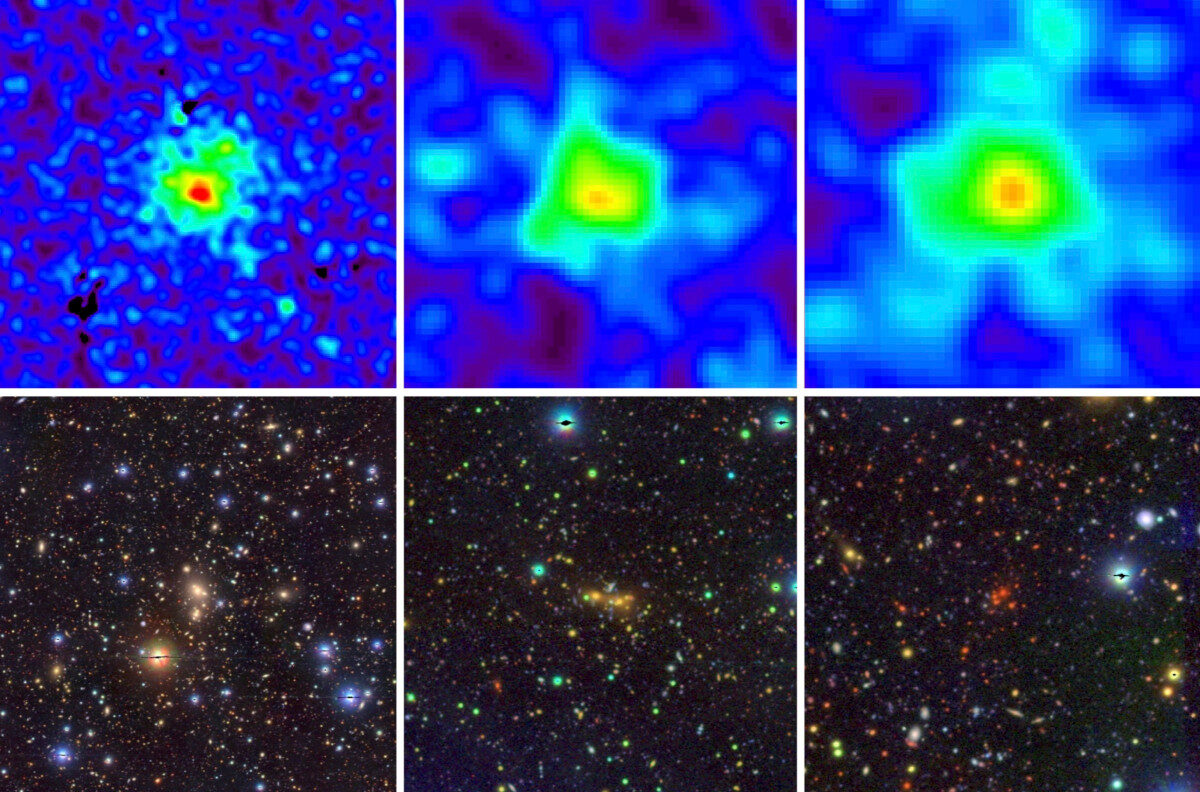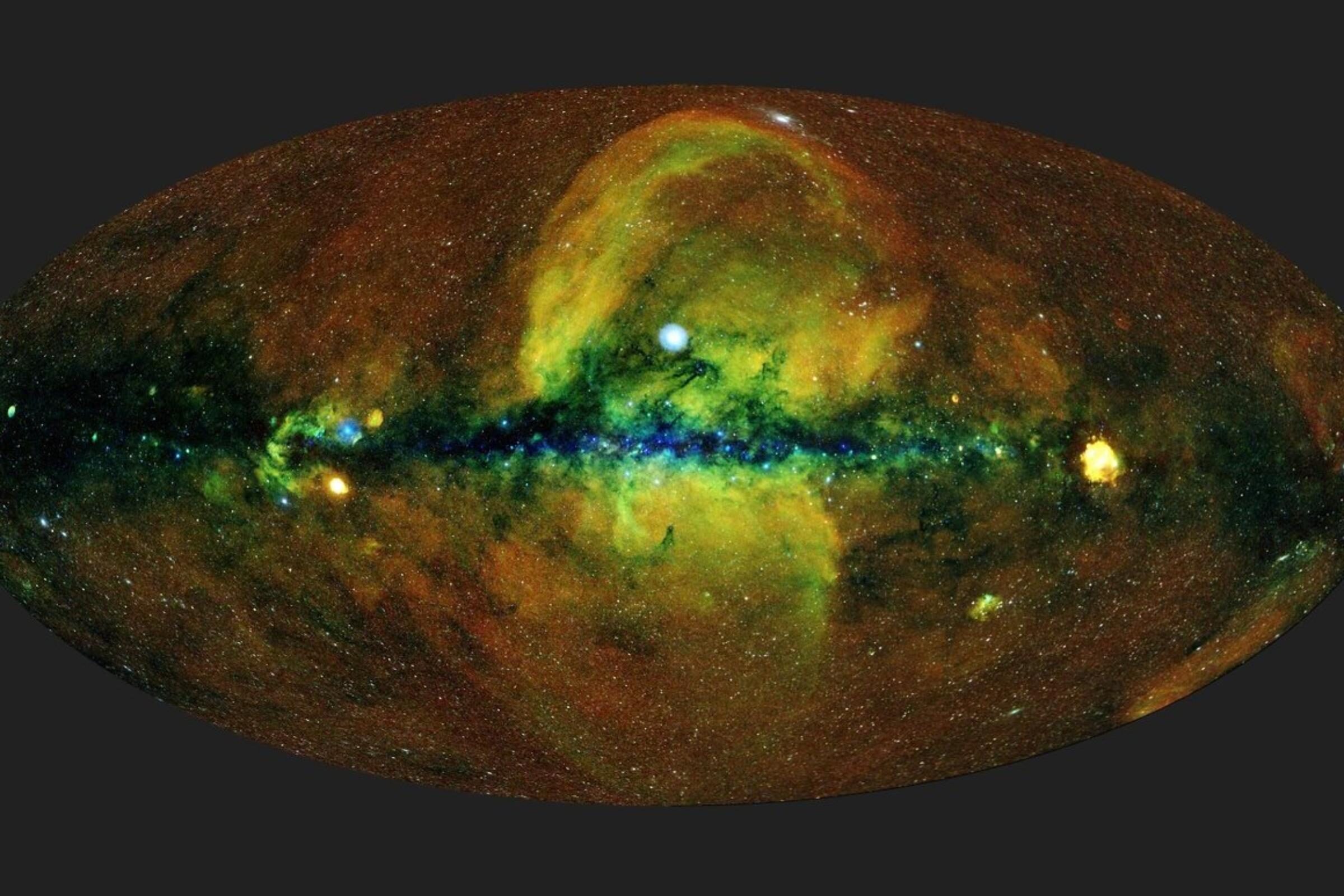
Now I-Non Chiu from National Cheng Kung University in Taiwan, working in collaboration with LMU astrophysicists Matthias Klein, Sebastian Bocquet, and Joe Mohr, has published a first study of dark energy using the eROSITA X-ray telescope, which focuses on galaxy clusters.

However, galaxy clusters are extremely rare and hard to find, requiring surveys of a large portion of the sky using the most sensitive telescopes in the world. To this end, the eROSITA X-ray space telescope - a project led by the Max Planck Institute for Extraterrestrial Physics (MPE) in Munich - was launched in 2019 to carry out an all-sky survey to search for galaxy clusters. In the eROSITA Final Equatorial-Depth Survey (eFEDS), a mini-survey designed for performance verification of the subsequent all-sky survey, about 500 galaxy clusters were found. This represents one of the largest samples of low-mass galaxy clusters to date and spans the past 10 billion years of cosmic evolution.
Energy density of dark energy appears to be uniform in space and constant in time
For their study, Chiu and his colleagues used an additional dataset on top of the eFEDS data - optical data from the Hyper Suprime-Cam Subaru Strategic Program, which is led by the astronomical communities of Japan and Taiwan, and Princeton University. The former LMU doctoral researcher I-Non Chiu and his LMU colleagues used this data to characterize the galaxy clusters in eFEDS and measure their masses using the process of weak gravitational lensing. The combination of the two datasets enabled the first cosmological study using galaxy clusters detected by eROSITA.
Their results show that, through comparison between the data and theoretical predictions, dark energy makes up around 76% of total energy density in the universe. Moreover, the calculations indicated that the energy density of dark energy appears to be uniform in space and constant in time. "Our results also agree well with other independent approaches, such as previous galaxy cluster studies as well as those using weak gravitational lensing and the cosmic microwave background," says Bocquet. So far, all pieces of observational evidence, including the latest results from eFEDS, suggest that dark energy can be described by a simple constant, usually referred to as the 'cosmological constant.'
"Although the current errors on the dark energy constraints are still larger than we would wish, this research employs a sample from eFEDS that after all occupies an area less than 1% of the full sky," says Mohr. This first analysis has thus laid a solid foundation for future studies of the full-sky eROSITA sample as well as other cluster samples.
Reference:
I-Non Chiu, Matthias Klein, Joseph Mohr, Sebastian Bocquet. Cosmological constraints from galaxy clusters and groups in the eROSITA final equatorial depth survey. Monthly Notices of the Royal Astronomical Society, 2023



Reader Comments
it is my belief that within the next 2 rotations of our Sun, there'll be a merger of activities between the Northern and Southern hemispheres, this will result in the development of a direct Earth facing magnetic field anomaly, that will produce Carrington style X class flares. This will do more than just ionising Earth's atmosphere, infrastructure damage is certainly on the cards.
It's interesting also that some sun spots presently rotating are demonstrating a dangerous reversals of polarity that has NASA currently concerned.
I witnessed first hand what happened recently, a unexpected solar wind significantly rattled Earth's magnetosphere, that was over a 6 hour period.
The last M3.7 flare from our Sun last 3 hours, courtesy of a sunspot that's shortly to become Earth facing.
As for Earth's magnetic field movements, they'll only make matters much worse.
There hunting for something they believe is there as against to drawing conclusions from unbiased observation.
Making shit up is fun maybe I could be a scientist too.
Now you just need a good acronym featuring wokeness for full grant interest and funding....
How about Transgender Equity Evolution Theory (TEET)..?
The narrative is the "big bang". The explanation of the universe is a bunch of accidental forces and energies that have "evolved" over billions of years to create what we see, including life on earth. No intelligence or consciousness involved.
When they "calculate" the overall energy of the universe, they have determined that material matter makes up 5% of the total. What is the 95% that is everywhere, outside of space and time. Is it intelligent? Does it have information? Is it holographic and fractal where each point is a mirror of the all?